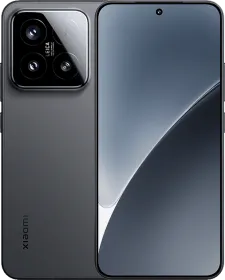Smartphones are getting bigger and bigger — we’re talking 6.9-inch displays on devices that are still technically “candy bar” phones, and even larger when you unfold a foldable. But if you’re someone who still craves a truly compact flagship smartphone, your options are frustratingly limited.
Lately, though, brands are starting to listen. Last year, Xiaomi answered the call with the Xiaomi 14 and the Xiaomi Civi 14 — both smaller, hand-friendly devices compared to the competition. Now, with the launch of the Xiaomi 15 under its high-profile Xiaomi 15 series, the company is doubling down: the vanilla Xiaomi 15 is officially the compact premium phone in its lineup.
Even more surprising? Xiaomi has priced the Xiaomi 15 at Rs 64,999 in India, making it about Rs 5,000 cheaper than the launch price of the Xiaomi 14 (review) — despite offering a newer Qualcomm Snapdragon chipset, upgraded Leica cameras, a bigger battery, and the same pocketable design.
In fact, the Xiaomi 15 doesn’t just aim to be good for a compact phone — it’s setting out to beat the likes of Apple’s iPhone 16 and iPhone 16e, Samsung’s base-model Galaxy S25, and even Google’s upcoming Pixel 9a when it comes to camera performance, display quality, and everyday performance.
In this review, we’ll find out – Is the Xiaomi 15 the best compact flagship you can buy right now? Or should you pick up an option from Apple, Samsung, and Google’s existing compact phone line-up?
Xiaomi 15 Price & Availability
The Xiaomi 15 is available in three striking color variants: Black, Green, and White. It comes in only 12GB RAM and 512 GB storage configuration.
The phone is available through Xiaomi’s official website, Amazon, and other retail stores. It is priced at ₹64,999.
Pros
- Clean, Lightweight and Compact Design
- Stunning LTPO OLED Display
- Versatile camera setup
- Improved battery life and fast charging
- Excellent connectivity options
- Improved HyperOS 2 with interesting AI features
Cons
- Throttles under intensive tasks
- Competition promises more software updates
- Ultrawide lacks autofocus
Xiaomi 15 Review: Design and Build

At a time when flagship phones are ballooning in size, the Xiaomi 15 gets certain things absolutely right. Weighing in at 191 grams and measuring 8.08mm thick, this compact premium smartphone fits naturally into an average-sized adult hand. You’ll still need a slight thumb stretch to reach across the display, but everyday tasks like adjusting volume, texting, or pulling down notifications are easily handled with one hand, which you rarely see with phones launched in 2025. It’s thinner than the Xiaomi 14, which measures 8.20mm thick and weighs slightly more at 193 grams.
It’s also noticeably slimmer than the OnePlus 13, which comes in at a hefty 8.50mm and 210 grams. While the OPPO Find X8 is a touch thinner at 7.90mm, it weighs about the same at 193 grams. Meanwhile, the Vivo V200 measures 8.00mm and tips the scales at 197 grams. In terms of weight, only Samsung’s Galaxy S25 feels noticeably lighter at just 162 grams — but that comes at the cost of battery capacity and durability.
The most attractive aspect of Xiaomi’s vanilla flagship is its manageable, sleek form factor without compromising usability. The Xiaomi 15 slips easily into your pocket and feels secure in your grip. Despite its size, the 6.36-inch display never feels cramped, whether you’re web browsing, answering emails, or doom-scrolling late at night.

From the front, the Xiaomi 15 looks almost invisible. The nearly all-screen design features slim bezels, a small centered punch-hole selfie camera, and hidden front-facing sensors and earpiece. It’s an understated, minimalist look — almost mundane at first glance, but one that grows on you with use.

The frame is crafted from aluminum alloy, lending the phone a solid, premium feel with no creaks or flex. For the display protection, Xiaomi touts its own Xiaomi Shield Glass. The back panel is made of a glass-fiber composite, chosen for added resilience without adding weight. The back glass has a subtle matte texture, resisting fingerprints and greasy smudges far better than the glossy backs seen on older flagships. The color options are muted and sophisticated, making the Xiaomi 15 just as comfortable at a boardroom table as it would be at a coffee shop.


Under the screen, Xiaomi uses an ultrasonic in-display fingerprint sensor — a clear upgrade over the more common optical scanners. In daily use, it’s fast, accurate, and refreshingly reliable.
And thanks to that IP68 ingress protection, the Xiaomi 15 can survive for up to 30 minutes submerged in 1.5 meters of freshwater — not that we recommend taking it swimming, but it’s one less thing to worry about if you’re caught in the rain.
Overall, the Xiaomi 15’s design and build quality feel thoughtfully premium, which is exactly what you’d expect from a flagship in 2025, but in a delightfully more pocketable form.
Xiaomi 15 Review: Display
Moving to the display part of the Xiaomi 15 review, we’re greeted with a 6.36-inch LTPO OLED panel that hits almost all the right notes for a flagship in 2025. It offers a dynamic 1-120Hz refresh rate, a 2670 x 1200 pixel resolution (for a pixel density around 460 PPI), and support for a 300Hz touch sampling rate. The display is sharp and responsive.

You also get DC dimming, HDR10+, Dolby Vision, and a full suite of TÜV Rheinland eye protection certifications like Low Blue Light and Flicker Free. Xiaomi brands this as a “custom M9 panel,” it’s not a massive leap in terms of generation, but there are some meaningful improvements. The peak brightness has been bumped slightly, from 3000 nits to 3200 nits, making the Xiaomi 15’s screen easier to view outdoors, even under harsh sunlight. It’s now one of the brightest compact smartphones on the market, edging out rivals like the Galaxy S25 and comfortably ahead of the upcoming Pixel 9a.
Thanks to its LTPO technology, the Xiaomi 15’s display isn’t just fast — it’s smart about when to slow down. When you’re idly reading, it can drop the refresh rate to 10Hz to save battery. The moment you touch the screen, it ramps right back up to a smooth 120Hz. This adaptive refresh rate improves battery life and gives the Xiaomi 15 an incredibly fluid feel in daily use.
Overall, the Xiaomi 15’s display feels like a flagship-grade experience: vivid, ultra-bright, incredibly responsive, and easy on the eyes even during marathon sessions. If you’re hunting for the best compact smartphone display in 2025, the Xiaomi 15 absolutely deserves a spot on your shortlist.
Xiaomi 15 Review: Speaker and Haptics
The Xiaomi 15 comes equipped with a stereo speaker setup, combining a bottom-firing loudspeaker with a slim earpiece at the top. On paper, it checks all the right boxes — but in practice, it falls a little short of expectations for a premium flagship. Phone’s compact body just doesn’t have enough acoustic space to create rich, full sound. The earpiece, in particular, feels a bit constrained.
Overall, the sound quality is decent for day-to-day use like watching YouTube videos or casual gaming, but it does lean toward a compressed profile. At higher volumes, you might notice some distortion in the high frequencies. It’s not a dealbreaker by any means, but if audio quality is a top priority for you, it’s worth noting that phones like the iPhone 16 and Samsung Galaxy S25 pull ahead with deeper bass and a fuller soundstage. Also, the Xiaomi 15 does not include a 3.5mm headphone jack.

On the haptic front, Xiaomi has tuned the vibration motor to be precise and accurate, especially for typing and navigation gestures. But again, the compact form factor means you lose a bit of that satisfying, punchy feel you get from larger phones. It’s good haptics, just not great haptics — a subtle but noticeable difference if you’re coming from bigger, bulkier flagships.
Xiaomi 15 Review: Software
The Xiaomi 15 ships with Android 15, layered under the company’s refined HyperOS 2 UI. This isn’t the stock Android you’ll find on a Pixel, but rather a heavily customized — and increasingly intelligent — interface filled with personalization options and smart AI tools.
Right off the bat, you’ll notice the bloat. There are 50 pre-installed apps on the Xiaomi 15. That’s… a lot. But it’s worth noting that most of them can be uninstalled. This still places Xiaomi somewhere in the middle of the flagship pack:
- OnePlus 13 keeps things slightly cleaner with 44 apps,
- OPPO Find X8 goes all-in with 58 apps,
- And the Vivo X200 isn’t far behind with 53 apps.
So while Xiaomi 15’s software experience isn’t the lightest, it’s not the worst either.


Once you clear the clutter, though, HyperOS 2 starts to shine. It’s highly customizable, letting you tweak everything from wallpapers and themes to app icons and fonts. The app drawer is on by default (finally!), but you can disable it if you’re used to the old Xiaomi home-screen-only approach. There’s also a “Light Mode” UX option, which simplifies the interface with larger icons and cleaner layouts — ideal for accessibility or anyone who just wants less visual noise.

AI Features
HyperOS 2 isn’t just about looks — it’s also where Xiaomi’s new AI tricks show up.
There’s a live AI Interpreter mode for real-time translation of conversations, call translation, and even video subtitles in your preferred language. You can also transcribe and translate recorded audio — useful for interviews, lectures, or just capturing ideas on the fly.

In AI Notes, Xiaomi has integrated features like AI Summarization, proofreading, and suggested edits. Think of it as a lightweight writing assistant, built into your phone. And when you switch over to the gallery, AI Erase Pro and AI Image Expansion give you Photoshop-style tools for removing objects, filling in background, and cleaning up reflections.
And yes, Circle to Search by Google is here too — working just as seamlessly as it does on a Pixel or Galaxy.
Updates and security patches
When it comes to long-term software updates, Xiaomi finally matches what OnePlus and OPPO are offering in 2025. The Xiaomi 15 gets four years of Android OS updates and six years of security patches. That’s:
- Equal to OnePlus 13 (4 + 6),
- On par with OPPO Find X8 (4 + 6),
- And slightly better than Vivo X200, which promises 4 years of OS and just 5 years of security updates.
Overall, The Xiaomi 15’s software experience strikes a fine balance between depth and polish. There’s too much bloat out of the box, yes, but once cleaned up, HyperOS 2 delivers smart, modern features with plenty of AI-powered tools that some users will find useful while others will call them gimmicky.
Xiaomi 15 Review: Performance and Benchmarks
The Xiaomi 15 may be a compact phone, but it’s backed by flagship-grade internals. Under the hood, you’ll find the Snapdragon 8 Elite processor — Qualcomm’s most powerful chipset yet. It has a dual-cluster architecture with two 4.32GHz Oryon cores and six 3.53GHz Phoenix performance cores. The GPU onboard is the Adreno 830, and if you’re keeping score, this is the same elite setup you’ll find in most 2025 Android flagships. It’s paired 12GB of LPDDR5X RAM, and fast UFS 4.0 storage. Our review unit had 12GB RAM and 512GB storage.

Performance in daily tasks? Smooth as butter. Browsing, messaging, multitasking, running AI features — this phone barely flinches. Whether it’s browsing in Chrome, doomscrolling Instagram, replying to WhatsApp messages, watching YouTube, or even juggling a few light photo edits — it handled all well. App switching is snappy, background processes don’t get killed too aggressively, and HyperOS feels well-optimized for daily use.
Even with Xiaomi’s preloaded apps (yes, there are a lot), the UI remained fluid. The phone handles AI features like live transcription, Circle to Search, and AI image editing with minimal delay. No lag, no stutters — this is the kind of reliable speed you’d expect from a flagship in 2025.
Benchmarks & Thermal Management
When it comes to synthetic benchmarks, the Xiaomi 15 holds its ground against rivals. However, cooling is where the cracks show, particularly during sustained loads or gaming sessions.






Performance Benchmarks & Gaming Comparison:
| Tests / Games | Xiaomi 15 | OnePlus 13 | OPPO Find X8 |
|---|---|---|---|
| Geekbench (Single) | 2,315 | 2,290 | 2,305 |
| Geekbench (Multi) | 7,165 | 7,210 | 7,180 |
| AnTuTu v10 | 1,825,000 | 1,880,000 | 1,850,000 |
| 3DMark (Wild Life) | 6,220 (Best) | 6,800 | 6,700 |
| 3DMark Stability | ~72% | ~82% | ~78% |
| BGMI (HDR+Extreme) | 50-60 fps (warms up) | 60 fps (sustained) | 60 fps (sustained) |
| Genshin Impact | 45-58 fps (drops after 10 mins) | 55-60 fps | 57-60 fps |
| Call of Duty: Mobile | 60 fps (stable) | 60 fps (stable) | 60 fps (stable) |
| Temperature after 30 min gaming | ~43°C | ~39°C | ~41°C |
While the Xiaomi 15 can run graphically demanding titles like Call of Duty: Mobile, BGMI, and Genshin Impact, it doesn’t deliver the same high sustained frame rates as the OnePlus 13, iQOO 13, realme GT 6 or OPPO Find X8. The thermal envelope is tighter, and you can feel the cooling system struggling to keep up under prolonged loads. Expect quicker battery drain during gaming sessions, and some frame drops once the phone heats up.
Xiaomi 15 Review: Cameras

The Xiaomi 15 sticks to a familiar camera setup—wide, ultrawide, and telephoto lens with a Leica-tuned camera system that delivers strong daylight performance. At the core is the same 50MP Light Fusion 900 sensor (OmniVision OVX9000) that we saw on the Xiaomi 14. It’s still a big sensor at 1/1.31″, paired with a Leica Summilux lens at f/1.6 and a 23mm equivalent focal length. It’s a formula that already worked well last year, and Xiaomi hasn’t felt the need to fix what isn’t broken.

The ultrawide sensor is a familiar 50MP Samsung JN1 with a 115° field of view. It delivers wide vistas but still struggles with softness and shadow crushing, which is par for the course in this category.


The big change lies in the telephoto department. Xiaomi has swapped out the JN1 for a 50MP JN5 sensor and changed up the lens. It now offers a 2.6x optical zoom—roughly equivalent to a 60mm focal length—which turns out to be ideal for portrait shots, but slightly less so for distant objects.
Daylight Camera Performance
Photos from the main sensor look excellent in daylight—sharp, high in contrast, with great dynamic range and pleasingly natural colors. Xiaomi’s color science leans towards realism rather than oversaturation, which some users might prefer over the punchier look from the likes of Samsung.




When you pit the Xiaomi 15 against the OnePlus 13 in daytime shots, Xiaomi’s camera captures highlights and shadows with more balance. That said, the OnePlus 13 pulls ahead in clarity when you zoom into the finer details—text in particular appears crisper.






In portraits, especially with the telephoto lens, the Xiaomi 15 delivers beautiful bokeh and accurate skin tones. Compared to the Vivo X200, Xiaomi tends to favor brighter, more colorful imagery. For example, a backlit flower arrangement appeared dreamier and more vibrant on the Xiaomi, while the Vivo leaned muted but more technically accurate with facial and texture details.

Low-Light Performance: Needs Night Mode
Out of the box, low-light performance isn’t the Xiaomi 15’s strongest suit. Without Night Mode, images often overexpose highlights and lose contrast, especially in night shots. The Vivo X200, in comparison, performs better straight away with more balanced lighting and preserved details.




Enable Night Mode, however, and the Xiaomi 15 gets a second wind. Light sources are much better controlled, and the overall exposure improves significantly. It’s not perfect—the mode doesn’t auto-activate in low light, which is a minor annoyance—but once you toggle it manually, the difference is noticeable.
Selfie Camera and Video Recording
Selfies on the Xiaomi 15 are reliably good. You get natural skin tones, decent background separation in portrait mode, and minimal processing. Edge detection is solid, and the dynamic range is good enough even in challenging lighting.
For video, the Xiaomi 15 can technically shoot in 8K at 30fps, but realistically, 4K at 30fps is the sweet spot. Footage is detailed and mostly stable, though we noticed occasional fluctuations in contrast and exposure, echoing some of the quirks seen in still photography.
Overall, the Xiaomi 15 doesn’t reinvent or completely change the game, but it polishes the spokes. It’s a reliable shooter with excellent Leica tuning, particularly in daylight and portrait scenarios. The low-light performance could use some AI magic out of the box, but the hardware is capable when paired with Night Mode.
Xiaomi 15 Review: Battery and charging
The Xiaomi 15 takes a big jump in battery size as it packs a 5,240mAh cell—a solid bump up from the Xiaomi 14’s 4,610mAh battery. That’s a 630mAh bump. Xiaomi has managed to pull it off without making the phone bulkier or heavier by using a Silicon-carbon battery.
And in day-to-day use, that bump is absolutely felt. I comfortably made it through a full day of usage—messaging, social media, music, an hour or two of YouTube, and even some gaming—without ever glancing nervously at the battery percentage. By bedtime, there was still juice left, and that’s without enabling any power-saving modes.

What’s more impressive is how Xiaomi now beats out other major flagships on sheer battery capacity. The Galaxy S25 packs a 4,000mAh battery, while the Pixel 9 sits at 4,700mAh, and neither of them includes a charger in the box. The Xiaomi 15, on the other hand, not only comes with a power adapter but also charges fairly quickly, taking around 50 to 55 minutes to go from 0 to 100%.
So, does it last all day? Yes. Can it hold up under heavier workloads? Also yes. While it’s not quite a two-day phone (unless you’re a light user), the Xiaomi 15 gets the battery basics right—and then some.
Review Verdict: Should You Buy the Xiaomi 15?
The Xiaomi 15 is a terrific compact flagship that justifies it position in the line-up. Not only is it more affordable than its predecessor, the Xiaomi 14, but it also brings meaningful upgrades where it counts: a faster Snapdragon 8 Elite chipset, a larger 5,240mAh battery, and refined AI experiences baked into HyperOS 2.
What’s even more impressive is that Xiaomi didn’t compromise on size or feel. The phone retains its svelte form factor, making it one of the few truly compact Android flagships still standing. Add to that a versatile Leica-tuned triple camera system, a gorgeous 120Hz LTPO OLED panel, and solid battery life, and you’ve got a phone that delivers a proper flagship experience, without burning a hole in your pocket.
Of course, there are some caveats. The ultrawide camera remains the weakest link—it lacks autofocus and struggles a bit in low light. There’s also noticeable thermal throttling under sustained loads, which takes some of the shine off its gaming chops. But for most people, especially those who value portability, clean software, and reliable performance, the Xiaomi 15 gets more right than it does wrong.
In a market where compact flagships are an endangered species, the Xiaomi 15 stands tall, figuratively speaking. That said, if you’re open to stretching your budget, the Samsung Galaxy S25 offers more stable, sustained performance and even better camera hardware. And if you’re on team iOS, the iPhone 16e is a natural alternative, though it loses out on camera flexibility with its single rear sensor.
Interestingly, the OnePlus 13S and Vivo X200 FE are also on the horizon, both promising to shake up the compact flagship category. Exciting times ahead for small phone lovers.

Smartprix ⭐ Rating: 7.98/10
- Design and Build: 8.5/10
- Display: 8.5/10
- Speakers: 7/10
- Haptics: 7/10
- Software: 8/10
- Biometrics: 8/10
- Performance: 7.5/10
- Cameras: 8.3/10
- Battery and Charging: 8/10
First reviewed in April 2025.

































